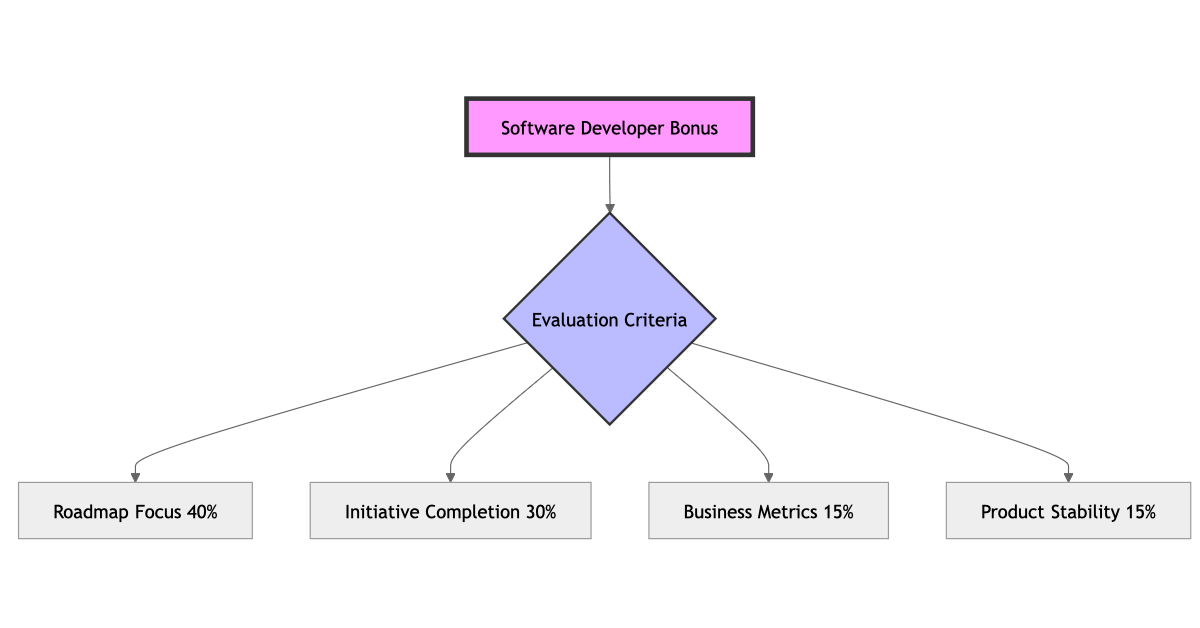Strategies for aligning incentives with performance and growth
Every CTO has faced the challenge: “What’s the best compensation model for my R&D team?” With so many options, it can feel overwhelming.
This decision depends on factors like your company’s stage (whether you’re in a startup, scale-up, or corporate), the business model (product vs. project focus), the growth phase (consolidation or hyper-growth), and your organizational culture and values.
From fixed salaries and bonuses to stock options and performance-based compensation, there’s a wide range of strategies to choose from. In this post, I’ll share practical insights from my experience to help you find the best approach for your team.
Start with the principles
Before diving into compensation options, take a moment to set clear principles that align with your company’s values. These will act as a compass, ensuring your compensation strategy stays consistent and aligned with your core beliefs.
Here are the top two that guide me:
Principle #1: Fairness
If you don’t treat people fairly, they’ll follow your example.
Fairness should be your top priority. Employees with the same job titles should receive comparable pay unless a clear reason exists (e.g., high potential). Overlooking this leads to dissatisfaction, especially in regions like Central Europe, where people are open about their compensation after a few years.
Principle #2: Transparency
If you don’t have a transparent system, your people won’t grow.
A transparent system keeps employees motivated. Communicate company levels, salary bands, and the criteria for promotions and pay increases. A well-structured career framework helps people understand how to advance and what it takes to reach higher levels.
Managers should apply these principles consistently to avoid discrepancies between teams.
Fixed vs. Variable pay
The case for bonuses in sales vs. development
For top performers in sales, the sky is the limit.
Most CEOs believe in rewarding high performers with extra incentives, and a great example of this is in sales departments.
In sales, bonuses make sense. A typical compensation structure might include a 40% base salary and a 60% performance-based component. This works because sales performance directly drives revenue.
When I was Head of Development, I saw a sales team use a whiteboard to track the BMWs they could buy based on their achievements. This drive is what skyrockets company performance and profitability.
However, this model doesn’t translate well to software developers. Here’s why:
Bonuses can create a culture where developers only perform when incentivized, like putting a coin in an arcade machine to make it work.

- Incentive-driven performance: While incentives can temporarily boost productivity, people might check out if they decrease.
- Company instability: When bonuses are tied to company performance, a downturn can cause developers to leave.
- Uncertain feature adoption: Developers work on features that might not get used, and they shouldn’t be penalized for that.
My advice
Focus on career benefits. Developers are more engaged when their compensation model is tied to their career growth framework.
The most effective strategy in my experience is moving the bonus component into the fixed salary by raising the overall salary bands. By reallocating the budget in this way, you create a culture where progression is more challenging and rewarding. Funnily enough, top-performing developers love this approach. Why?
- They thrive when pushed to their limits.
- It naturally filters out underperformers without a fight.
- It makes your company more attractive to new talent, potentially raising your team’s market position.
To support this, ensure your probation period is more challenging, with clear success criteria for the first three months.
TIP: How to answer “Why are salespeople buying new BMWs and houses while I just get a salary?” from senior software developers and engineers:
Salespeople invest heavily in building long-term relationships with clients. They work on leads for up to 1.5 years, nurturing them and often going beyond their regular duties. This effort is why they receive higher variable pay—it’s a challenging job that rewards persistence.
If bonuses are necessary
Bonuses are about more than just business metrics. Focus on what truly matters.
It’s no surprise most companies prioritize business metrics when assessing bonuses. This isn’t the right approach. If a bonus system is essential to your company’s culture, consider the following metrics structure:
- Roadmap focus (40%): Contributions to top priorities (~60% to roadmap).
- Initiative completion (30%): Timely and quality project delivery.
- Business metrics (15%): Company financial performance.
- Product stability (15%): Keeping the product stable with minimal outages.
This way, you primarily reward engineers based on their contributions to what matters most, not just the organization’s overall financial success.
If you don’t have clearly defined metrics, your team will turn against you.
Make sure these metrics are clearly defined and communicated to avoid misunderstandings. You’ll lose your team’s trust if they interpret them differently or feel they’re inconsistently applied.
Watch out for these traps
- Don’t link engineer compensation too closely to variables they can’t control. Performance-based incentives can backfire as engineers have limited influence on product outcomes.
- Align incentives with what engineers can impact. Missing targets can result in lost motivation and talent.
- Focusing on OKRs can boost metrics but create a culture where people prioritize their products/projects at the expense of others—where everyone looks out for themselves instead of working together.
Other important Compensation considerations
Aside from fixed salaries and bonuses, consider these models depending on your company’s situation:
- Stock Options: Aligns employees’ success with the company’s long-term goals.
- Meritocracy: Compensation based on each team member’s contribution, with no upper limits. Teams that directly impact revenue receive a higher share, but all teams are rewarded for their role in overall performance.
This model works particularly well in industries like stock trading or commodities, where high performers can earn significant compensation.
Ready to empower your team?
Apply these best practices and customize your compensation model to fit your company. Let me know how it goes!
About Marian Kamenistak
Marian provides coaching and mentoring to engineering managers and leaders across various levels, helping organisations to succeed in building products.
On top, Marian leads the Engineering Leaders CZ community, organising 9 meetups a year for Engineering Leaders, Managers, Tribe leads, VPEs and CTOs in Central Europe.
Read more about Marian’s mission.
Subscribe and stay tuned for the next post! ?





